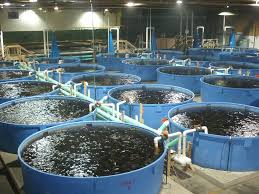How to handle water problems in catfish farming
Handling water problems in catfish farming is crucial for the success of your operation. Water quality is essential for the health and growth of catfish. Here are some steps to address water problems:
 Learn More
Learn More1. **Regular Water Testing**: Regularly test the water quality parameters such as pH, ammonia, nitrite, nitrate, and dissolved oxygen. This will help you identify any issues early.
2. **Adequate Aeration**: Ensure proper aeration to maintain adequate oxygen levels. Aeration systems like diffusers or paddlewheels can help oxygenate the water.
3. **Water Filtration**: Use mechanical and biological filtration systems to remove debris, excess waste, and impurities from the water.
4. **Water Exchange**: If water quality deteriorates, consider partial water exchanges to dilute pollutants and improve water quality.

5. **Stocking Density**: Avoid overstocking ponds or tanks, as high stocking density can lead to increased waste production and deteriorating water quality.
READ ALSO Top management secrets for catfish farmers
6. **Feeding Management**: Be cautious with feeding. Do not overfeed, as uneaten feed can lead to water quality problems. Monitor the feeding rate and adjust it according to the fish’s appetite.
7. **Temperature Control**: Maintain water temperature within an appropriate range for catfish. Sudden temperature fluctuations can stress the fish.
8. **pH Management**: Regularly monitor and adjust pH levels to ensure they remain within an appropriate range for catfish.
9. **Salinity**: Ensure that the salinity levels are suitable for catfish. Some catfish species are sensitive to salt, so maintain appropriate levels.
10. **Biosecurity**: Implement biosecurity measures to prevent the introduction of diseases and pathogens that can negatively impact water quality and fish health.
11. **Algae Control**: Manage excessive algae growth, as it can deplete oxygen levels during the night. Use algaecides or implement natural methods for control.
READ ALSO How to make the best of yellow maize farming business
12. **Chemical Treatments**: Use water conditioners and treatments, if necessary, to address specific water quality issues.
13. **Silt Control**: Implement erosion control measures to prevent silt runoff into ponds or tanks, which can lead to reduced water quality.
ATTENTION: Click “HERE” to join our WhatsApp group and receive More updates directly on your WhatsApp!
14. **Record Keeping**: Maintain detailed records of water quality parameters, feeding, and fish health to identify trends and address issues promptly.
15. **Consult an Expert**: If you encounter persistent water quality problems, consider consulting with an aquaculture expert or a local extension office for guidance.
Addressing water problems in catfish farming is essential for the success of your operation. Regular monitoring and proactive management can help maintain optimal water conditions for healthy and productive catfish.
🧩CREATED BY DR JOSEPH DEJI-FOLUTILE















